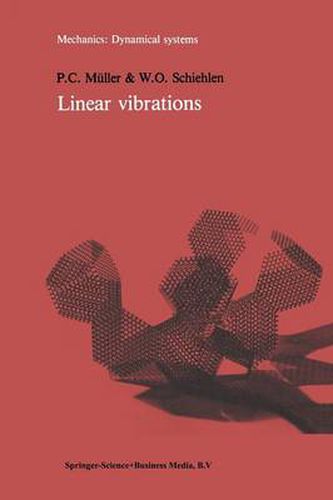Readings Newsletter
Become a Readings Member to make your shopping experience even easier.
Sign in or sign up for free!
You’re not far away from qualifying for FREE standard shipping within Australia
You’ve qualified for FREE standard shipping within Australia
The cart is loading…






This title is printed to order. This book may have been self-published. If so, we cannot guarantee the quality of the content. In the main most books will have gone through the editing process however some may not. We therefore suggest that you be aware of this before ordering this book. If in doubt check either the author or publisher’s details as we are unable to accept any returns unless they are faulty. Please contact us if you have any questions.
In the last decade the development in vibration analysis was char acterized by increasing demands on precision and by the growing use of electronic computers. At present, improvements in precision are obtained by a more accurate modelling of technical systems. Thus, for instance, a system with one degree of freedom is often not accepted, as it used to be, as a model for vibration analysis in mechanical engineering. As a rule, vehicles and machines have to be modelled as systems with many degrees of freedom such as multibody systems, finite element systems or con tinua. The mathematical description of multi-degree-of-freedom systems leads to matrix representations of the corresponding equations. These are then conveniently analyzed by means of electronic computers, that is, by the analog computer and especially by the digital machine. Hence there exists a mutually stimulating interaction between the growing require ments and the increasing computational facilities. The present book deals with linear vibration analysis of technical systems with many degrees of freedom in a form allowing the use of computers for finding solutions. Part I begins with the classification of vibrating systems. The main characteristics here are the kind of differential equation, the time depen dence of the coefficients and the attributes of the exciting process. Next it is shown by giving examples involving mechanical vibrating systems how to set up equations of motion and how to transform these into state equations.
$9.00 standard shipping within Australia
FREE standard shipping within Australia for orders over $100.00
Express & International shipping calculated at checkout
This title is printed to order. This book may have been self-published. If so, we cannot guarantee the quality of the content. In the main most books will have gone through the editing process however some may not. We therefore suggest that you be aware of this before ordering this book. If in doubt check either the author or publisher’s details as we are unable to accept any returns unless they are faulty. Please contact us if you have any questions.
In the last decade the development in vibration analysis was char acterized by increasing demands on precision and by the growing use of electronic computers. At present, improvements in precision are obtained by a more accurate modelling of technical systems. Thus, for instance, a system with one degree of freedom is often not accepted, as it used to be, as a model for vibration analysis in mechanical engineering. As a rule, vehicles and machines have to be modelled as systems with many degrees of freedom such as multibody systems, finite element systems or con tinua. The mathematical description of multi-degree-of-freedom systems leads to matrix representations of the corresponding equations. These are then conveniently analyzed by means of electronic computers, that is, by the analog computer and especially by the digital machine. Hence there exists a mutually stimulating interaction between the growing require ments and the increasing computational facilities. The present book deals with linear vibration analysis of technical systems with many degrees of freedom in a form allowing the use of computers for finding solutions. Part I begins with the classification of vibrating systems. The main characteristics here are the kind of differential equation, the time depen dence of the coefficients and the attributes of the exciting process. Next it is shown by giving examples involving mechanical vibrating systems how to set up equations of motion and how to transform these into state equations.